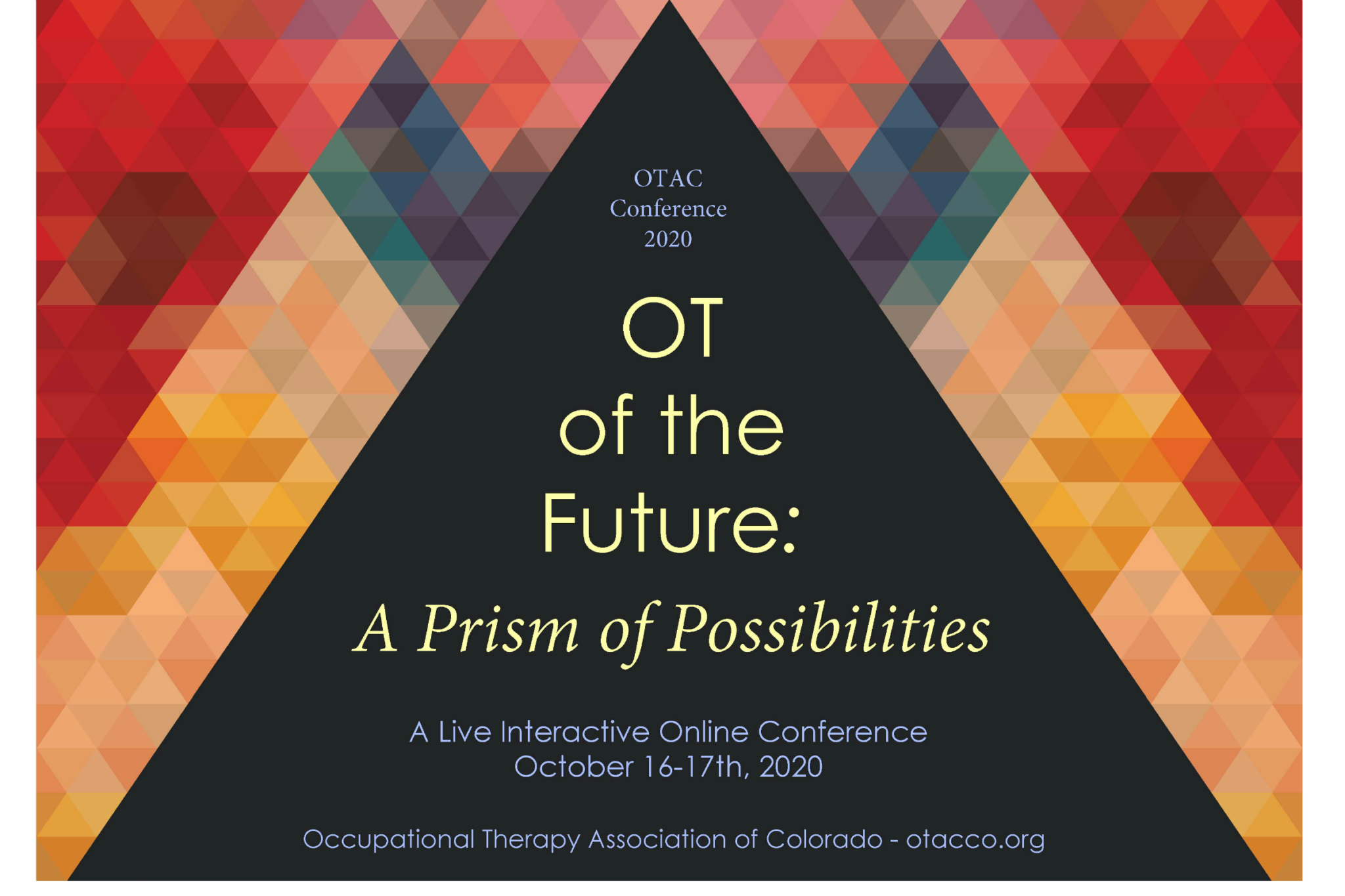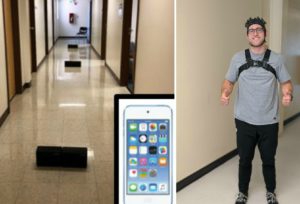
Story by Giulia Deem
The Occupational Therapy Association of Colorado’s annual conference brought occupational therapists and occupational therapy students together as usual for their fall conference in October; however, it looked somewhat different this year. Instead of connecting with others in person, presentations were live-streamed from Colorado, as well as from the United Kingdom and Canada. Presenters and attendees from Colorado State University’s Department of Occupational Therapy share their experiences with this year’s virtual conference.
Virtually possible
“I liked being able to share my work with a larger number of people through the virtual format,” shared Julie Silver Seidle. “The purpose of my work is to bring my passion and clinical experience into my research pursuits to better support the needs of dementia caregivers throughout the entire caregiver journey, including bereavement.”
Another presenter, Karen Atler said, “I appreciated the opportunity to have a broader audience from different geographic locations and settings.” As developer of the Occupational Experience Profile, Atler shared how this profile can be used in a variety of settings, aiming to help clients better understand how occupational therapy services connects with their everyday activities.

An occupational therapy student, Kalena Giessler-Gonzalez, who presented with Jaclyn Stephens, said that the experience was enjoyable because she felt less pressure presenting virtually. Giessler-Gonzalez presented her thesis research, which expands on a tool Stephens developed. This tool is designed to screen athletes for a safe return to play following a sports-related concussion.
Giessler-Gonzalez shared, “A main point of my presentation was showing occupational therapists’ unique value in concussion management, especially with athletes, and how we really bring a holistic, occupation-focused lens.”
Cameras off, smiles on
Presenters and attendees acknowledged some universal limitations that come with any virtual format, such as promoting active learning and maintaining engagement. As one student, Carrie Coates noted, “Presenters could not use body language or gestures as easily to communicate their points. It was harder to maintain engagement sometimes, just like online class.”
Giessler-Gonzalez affirmed this comment stating, “It was hard to not have audience feedback to see if they were following the presentation and laughing at my hilarious jokes.”
Despite the virtual adaptation, members of the OTAC were determined to provide presenters and attendees with as much interaction as possible. The unique virtual platform that the OTAC utilized provided participants an opportunity to engage in polls, join virtual happy hours, answer icebreaker questions, chat with other attendees, participate in workshops, post questions to presenters, and more.
Coates shared, “Having this format allowed me to live-text conversations about how cool the material was with my fellow classmate and attendee.” Coates also appreciated the lack of traveling the virtual format offered and the money that this saved. “I hope that future conferences allow for virtual attendance options.”
Not the first rodeo
While this was the first annual virtual OTAC conference, the OTAC has previously held virtual events including a presentation series in April. Shannon Perrins, an occupational therapy student, presented virtually for “Conversations that Matter” in the spring of 2020. Perrins shared, “The aim of these presentations was to cultivate conversations on topics that occupational therapists around Colorado are passionate about, as well as to have connections during a season where we are extremely limited in social interaction with others.”
Perrins continued, “It was a joy to present.” She said it was a privilege to talk about advocacy and four things that she felt occupational therapists should be actively cultivating: passion, staying informed, building your tribe, and being bold. “We each have a unique aspect to contribute to our profession.”
An amazing conference
“The OTAC has shown that we can still find ways, big or small, to support each other, share our enthusiasm, and make valuable connections with each other during this time of limited face-to-face interactions,” said one participant.
Silver Seidle, one of the OTAC board members summarized it well, “I am so proud of the group of dedicated individuals, including CSU-OT students who volunteered their time and pulled off an amazing conference!”
CSU-OT presentations
OT of the Future: A Prism of Possibilities
Oct. 16 and 17, 2020
- “Research Presentation: Life After Caregiving”
Julie Silver Seidle, OT Ph.D. program graduate - “Newly-Developed Dual Task Screen Elicits Significant Dual Task Costs in Motor and Cognitive Performance in Healthy, Young-Adult Athletes”
Kalena Giessler-Gonzalez, occupational therapy student and Jaclyn Stephens, assistant professor - “The Occupational Experience Profile: An Assessment Revealing a Transactional Perspective of Occupation”
Karen Atler, associate professor - “Sleep and OT: Let’s Dream Together”
Natalie Rolle, research associate, Center for Community Partnerships
Conversations That Matter
April 2020
- “Supporting Sleep Through the COVID-19 Pandemic”
Natalie Rolle, research associate, Center for Community Partnerships - “OT and Caregivers: Building Connection & Community”
Julie Silver Seidle, OT Ph.D. program graduate - “Rethinking Advocacy: Knowing Your ‘Why’ and Cultivating Skills in Advocating for OT, Clients, and Yourself”
Shannon Perrins, occupational therapy student
The Department of Occupational Therapy is a part of CSU’s College of Health and Human Sciences.